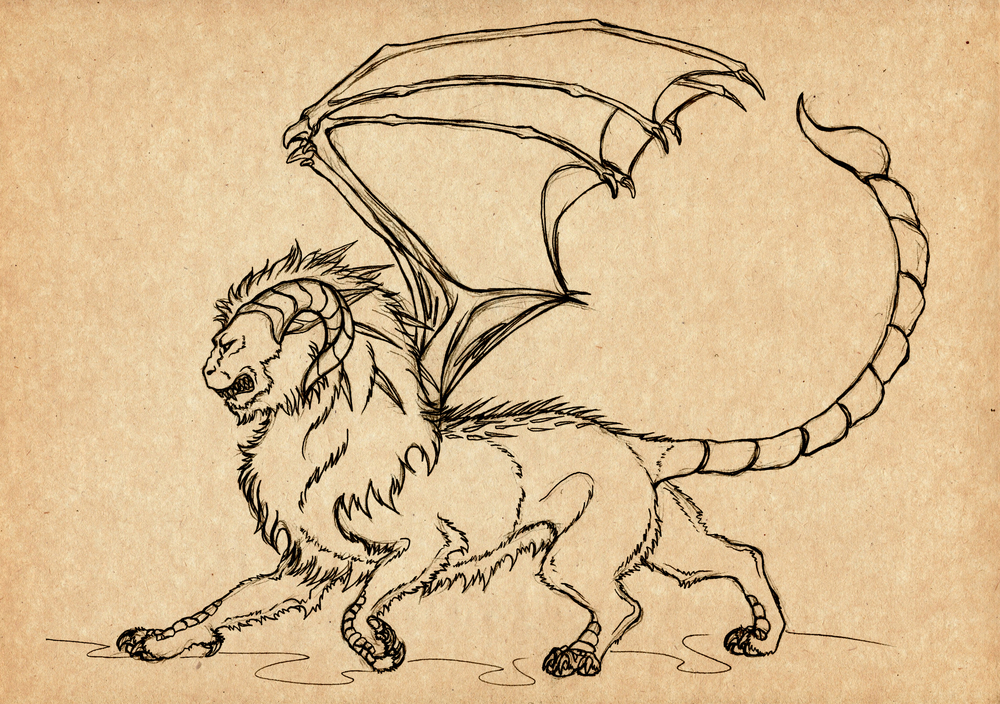
History is packed with ancient stories of legendary beasts and the great heroes who conquered them. While a lot of attention is often given to the mythological creatures of Greece and other locations around Europe, all cultures of the world have monsters and magical animals. In the Middle East, for example, there are some truly fascinating and bizarre accounts. Read on to learn about the mythological beasts of the Middle East.
The Huma Bird
Winged beasts are par for the course in mythology. From griffins to dragons to phoenixes, plenty of stories revolve around the sky and the animals found there. The Huma bird, also called the bird of paradise, is a mythical bird from Iranian legend, famous for never resting. Stories of the Huma say that it never touches the ground and spends its entire life circling the planet from above. All legends state that catching the bird is absolutely impossible. However, simply seeing the bird in one’s lifetime is enough to ensure you will be happy until death.
The Manticore
One of the more popular mythological beasts of the Middle East is the manticore. Dating back to Ancient Persia, the manticore is a beast with the head of a human, the body of a lion, and a tail made of either poisonous quills or a scorpion’s stinger. Stories of the manticore spread throughout the world by way of travelers, with accounts of the beast appearing in texts as far away as Greece. All tales of the manticore say that the beast feasts on the bones of humans, making them creatures that inspire great fear.
Many academics and historians draw comparisons between the sphinxes of Egypt and the manticore of Persia. Though there are drastic differences between the two mythological creatures, depictions of both throughout history show them as quite similar in looks.
The Peri
The Peri were said to be beautiful spirits reminiscent of humans, with the exception of having large wings growing from their backs like angels. Ancient texts from Persia state the Peri were spirits who were not allowed to enter heaven until they had completed some form of atonement. Many Peri had a mischievous nature. Still, they were not malicious toward mankind. When Islam became the dominant religion in the region, the Peri were included in the faith. Instead of being tricksters, the Peri became forces of good under Islam.
Many stories about the Peri have the spirits at odds with the “daeva.” These were low-level spirits of evil. The daeva would capture Peri and lock them away in iron cages, and they were sometimes freed by heroes or other spirits.
The Shah of the Snakes
The shahmaran, or Shah of the Snakes, is another creature that dates back to Ancient Persia, and she is half snake and half woman. There are many tales about the shahmaran. The most famous involves a young man named Camasb and how a shahmaran taught him about herbal healing. When a prophecy calls for Camasb to eat part of the shahmaran, he absorbs her wisdom and becomes a doctor. There are countless variations on tales of the shahmaran, and it is considered one of the older mythological stories from the region.
The Roc
Popularized in “One Thousand and One Nights,” the roc is a bird found in Arabian fairy tales and legend. The giant bird has appeared in Eastern and Western myths, though it typically does not act as an enemy to human beings. Instead, stories state the bird’s ability to carry away elephants and ox is said to have helped many people travel vast distances by air.
Mythological Beasts of the Middle East
The stories of fantastic beasts and terrifying monsters are some of the oldest told around the world. While it may never be known why these tales were so prevalent in early cultures, there is much that can be learned today by simply looking back at the imaginative stories that were spun.

